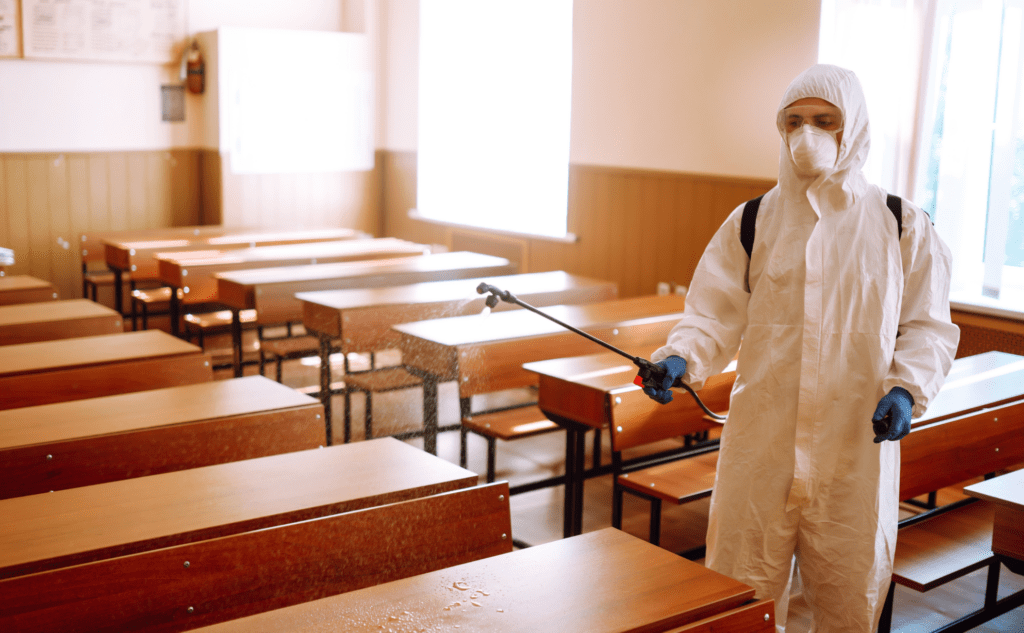What Makes a School Dirty?

Schools are the cornerstone of our communities, where children spend a significant portion of their days learning, growing, and forming connections. While schools are designed to be places of safety and inspiration, many struggle with a critical issue: cleanliness. It’s easy to overlook, but the state of a school’s cleanliness has far-reaching implications. Clean schools aren’t just about appearances—they directly impact student health, attendance, and academic performance.
This issue has become even more pressing in recent years. Following a global pandemic that disrupted learning, schools must do everything possible to create environments that support engagement and safety. Clean schools are more than just a good idea—they’re an essential investment in the future of education.
When we think about dirty schools, we often imagine cluttered classrooms, sticky desks, or overflowing trash cans. However, the challenges go far deeper. For example, the U.S. is home to nearly 130,000 K-12 schools, each with its unique approach to cleaning. Many schools rely on outdated equipment, inconsistent cleaning protocols, and custodial teams stretched too thin. This lack of standardization can have serious consequences for the health and well-being of students and staff.
One key issue is the poor maintenance of cleaning equipment. It’s not enough to use tools like vacuums, mop buckets, and microfiber cloths; these tools need to be cleaned and maintained regularly. Dirty or poorly maintained equipment can spread bacteria and dirt, reducing their effectiveness and potentially creating new health hazards. For example, a vacuum with a full filter can release more dust into the air than it removes, contributing to poor indoor air quality.
Cross-contamination is another significant concern. Schools typically have a variety of spaces, including classrooms, restrooms, and kitchens. Without proper protocols, cleaning tools can be used across these areas, spreading germs from one space to another. A cloth used to clean a restroom sink, for instance, should never touch a classroom desk. Yet, without clear systems in place, this happens more often than we’d like to admit.
Cleaning frequencies also play a critical role in maintaining a healthy school environment. Research shows that many schools underestimate how often surfaces should be cleaned. A study conducted in Connecticut found that microbial concentrations on desks remained high even after cleaning. This suggests that existing cleaning schedules may be insufficient to reduce allergens and bacteria effectively. High-touch areas like desks, doorknobs, and light switches need regular attention to ensure they remain safe for use.
Another contributing factor to dirty schools is the lack of training provided to custodial workers. In many cases, training consists of a brief period where new employees shadow experienced workers. While this can provide a basic understanding of tasks, it doesn’t equip custodians with the knowledge needed to clean effectively. Comprehensive training should include not only the “how” but also the “why.” Understanding the importance of their work can empower custodians and improve cleaning outcomes.
Finally, many schools lack standardized cleaning systems. Cleaning is more than just moving dirt around—it’s about removing unwanted substances from the environment. Without a system in place, such as cleaning from the top of a room to the bottom or using separate tools for different areas, custodians may inadvertently spread dirt rather than remove it. Implementing standardized cleaning protocols can make a significant difference in the overall cleanliness and safety of a school.
The consequences of dirty schools go beyond appearances. Poor indoor air quality, often caused by dust and mold, has been linked to respiratory issues, lower test scores, and increased absenteeism. For students, these issues can hinder learning and participation. For staff, including teachers and custodians, a poorly maintained environment can lead to health problems and decreased job satisfaction.
The good news is that the challenges of dirty schools can be addressed with the right approach. Federal funding, such as resources provided through initiatives like the American Rescue Plan, offers schools an opportunity to invest in better cleaning practices. This funding can be used to upgrade equipment, train custodial staff, and implement standardized cleaning systems.
To create cleaner schools, administrators should prioritize the following steps. First, upgrade outdated equipment to modern tools like HEPA-filter vacuums and microfiber cleaning systems. These tools are not only more effective but also contribute to better indoor air quality. Second, provide comprehensive training programs for custodial workers. By teaching employees the science behind their work, schools can improve cleaning outcomes and boost morale. Third, establish standardized cleaning protocols that ensure consistency and prevent cross-contamination. Finally, monitor and measure cleaning performance to identify areas for improvement and maintain high standards.
Clean schools are more than a hygiene issue—they’re a fundamental part of creating environments where students can thrive. By addressing the factors that contribute to dirty schools, we can ensure that every child has a safe and healthy place to learn. In a world where education is more important than ever, investing in cleanliness is investing in our future.
At (OS1) Innovations, we’re dedicated to transformational cleaning practices.
Ready to commit to your organization’s evolution?
Join a free upcoming Janitorial Secrets Webinar to embark on a journey towards cleaning excellence.
